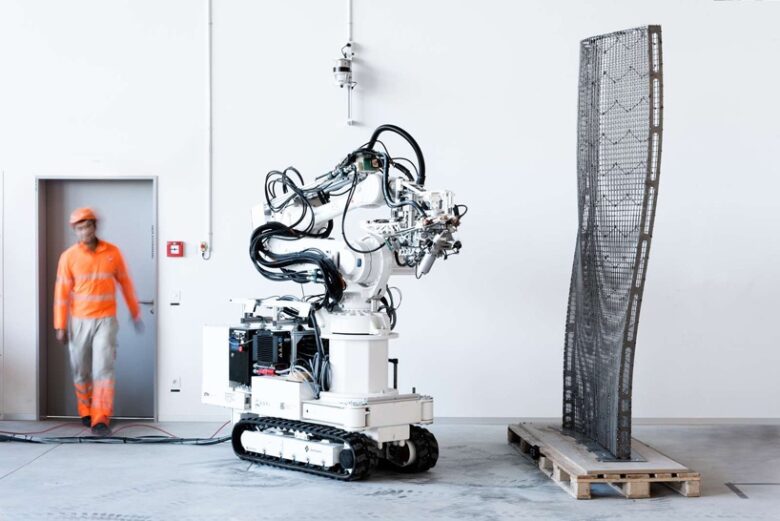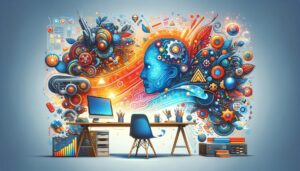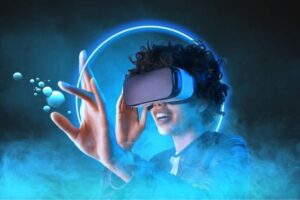Artists have long used robots as part of their artistic practice, employing various strategies that combine them with other media, systems, contexts, and life forms to explore issues of control, authority, and technological dominance in society at large. Such works often pose questions regarding control and authority while questioning wider societal implications caused by technological dominance.
This article uses a collaborative prototyping approach with artists and engineers to explore the design space for robotic art-making. Findings show that general designs were perceived as intended and appealing, while personalization through symbolic representation promoted greater disclosure while more clearly communicating emotions.
1. Machines are gaining analytical capabilities
Popular conceptions of creativity depict it as an unpredictable, inexplicable process that’s nearly impossible to replicate, while machines follow strict rules and operate accordingly. Machine learning algorithms scour vast art databases in search of patterns that inspire new creative works. In graphic design, for example, these algorithms suggest potential layouts and compositions quickly to facilitate ideation stages more rapidly.
But does the analytical prowess of machines truly turn them into artists? While some might argue the answer lies elsewhere, others see these developments as heralding in an exciting collaborative future where human ingenuity meets machine analysis to broaden horizons of creativity while cementing machines as true collaborators.
2. Machines are becoming more collaborative
Machines are no longer considered simple tools; rather, they are now being seen as collaborative partners in the creative process. This new role combines human imagination with machine intelligence – which is revolutionizing industries such as art, music, and design.
Carnegie Mellon researchers created a robotic system called Collaborative FRIDA, which interacts with people of any artistic ability and creates pictures from text prompts or image examples, responding to physical input as well. Interactive robotic art like this one represents a crucial step toward greater collaboration between humans and machines across all fields.
3. Machines are being more creative
Machines may mimic creative work, like predictive text software producing an article for The New Yorker, but they cannot produce true creativity like humans can. While machines may solve problems or design aesthetic structures, generating originality remains solely a human capacity.
Sougwen Chung and Tresset are exploring these questions through working with robots. Their art experiments demonstrate how human artists and their robotic tools collaborate on collective creation processes that improvise impromptu collaboration between each other, dispelling any notion that machines cannot be creative.
4. Machines are being more expressive
As collaboration between humans and robots becomes ever more entwined, it’s crucial that each partner understand their roles. Machines’ analytical capacities have propelled them beyond traditional tools into roles of creative collaboration in artistic practice. Artwork created by these machines is both beautiful and challenging, raising questions about creativity while challenging traditional assumptions regarding art and technology.
As one example, robots such as Ai-Da use machine learning to analyze thousands of paintings before creating unique works themselves. Some artists, however, opt not to utilize artificial intelligence or machine learning at all in their artwork creation process.
5. Machines are being more social
As technology has advanced, artists have explored its social implications by challenging one-sided views of new technologies and challenging the public to consider their practical, social, and ethical repercussions.
Robotic art is a flourishing field, and more artists than ever are working in it. One such artist is FRIDA from Carnegie Mellon University’s Robotics Institute; she can collaborate in real-time painting sessions. Researchers there created this system named after artist Frida Kahlo, for whom it is named. Pilat has found that visitors to her exhibition frequently stop and pose for pictures with Bunny, showing they respond as they would to any person. She finds this encouraging.
6. Machines are being more innovative
As AI continues to advance, its uses become ever more inventive. This trend can especially be observed in fields like design and music: for graphic design projects, generative algorithms can suggest designs based on previous successes, speeding up the design process; in music composition, generative models create melodies that would otherwise be unthinkable to human musicians alone.
These innovations are shifting our perceptions of robots and their place in society. While robots won’t ever replace human artists entirely, they’ve become an invaluable ally in creative work – which democratizes art by making it accessible to more people.
7. Machines are being more collaborative
Even as many still question whether robot art qualifies as truly creative, robots have gained in popularity among the general public. Take Ai-Da, for instance – she has won over audiences thanks to her unique blend of art, technology, and transhumanism. Artists are increasingly turning to robots, such as IBM Watson’s Watson, for help in their creative processes. Grammy-nominated music producer Alex Da Kid relies on Watson for assistance when writing songs.
Researchers at Carnegie Mellon University’s Robotics Institute have created CoFRIDA, a collaborative robotic system capable of painting with humans of any artistic ability – which has the power to transform our perceptions of creativity and robots alike. Such partnerships are revolutionizing how we view creativity.
8. Machines are being more expressive
Artists throughout history have utilized robots as an expressive medium. From kinetic sculptures to drawing robots, these inventions have transformed and expanded our understanding of art.
Robots as creative collaborators challenge our ideas about creativity. They challenge what it means to be artistic while opening up new possibilities for technology in general. CoFRIDA, for instance, can draw or paint with humans using a tablet device and is distinguished by its ability to interact naturally with people – an integral aspect of its creative potential.
9. Machines are being more social
Creativity often is associated with romanticized notions of an elusive creative process that’s difficult to pin down and sometimes seemingly magical, while machines tend to be seen as rational systems operating under established guidelines.
Artists across disciplines are charged with considering practical, social, and ethical repercussions of technologies before their wide adoption. This is particularly relevant to robotic artists – their collaboration of human intelligence with artificial intelligence magnifying art’s power to bridge divides and drive social change – whether through attaching mechanical exoskeletons onto dead rabbits or staging cathartic self-destructive events like an “extravaganza,” robotic art pushes the limits of what is possible.




